Adiponectin supplementation in pregnant mice prevents the adverse effects of maternal obesity on placental function and fetal growth
- PMID: 26417088
- PMCID: PMC4611638
- DOI: 10.1073/pnas.1515484112
Adiponectin supplementation in pregnant mice prevents the adverse effects of maternal obesity on placental function and fetal growth
Abstract
Mothers with obesity or gestational diabetes mellitus have low circulating levels of adiponectin (ADN) and frequently deliver large babies with increased fat mass, who are susceptible to perinatal complications and to development of metabolic syndrome later in life. It is currently unknown if the inverse correlation between maternal ADN and fetal growth reflects a cause-and-effect relationship. We tested the hypothesis that ADN supplementation in obese pregnant dams improves maternal insulin sensitivity, restores normal placental insulin/mechanistic target of rapamycin complex 1 (mTORC1) signaling and nutrient transport, and prevents fetal overgrowth. Compared with dams on a control diet, female C57BL/6J mice fed an obesogenic diet before mating and throughout gestation had increased fasting serum leptin, insulin, and C-peptide, and reduced high-molecular-weight ADN at embryonic day (E) 18.5. Placental insulin and mTORC1 signaling was activated, peroxisome proliferator-activated receptor-α (PPARα) phosphorylation was reduced, placental transport of glucose and amino acids in vivo was increased, and fetal weights were 29% higher in obese dams. Maternal ADN infusion in obese dams from E14.5 to E18.5 normalized maternal insulin sensitivity, placental insulin/mTORC1 and PPARα signaling, nutrient transport, and fetal growth without affecting maternal fat mass. Using a mouse model with striking similarities to obese pregnant women, we demonstrate that ADN functions as an endocrine link between maternal adipose tissue and fetal growth by regulating placental function. Importantly, maternal ADN supplementation reversed the adverse effects of maternal obesity on placental function and fetal growth. Improving maternal ADN levels may serve as an effective intervention strategy to prevent fetal overgrowth caused by maternal obesity.
Keywords: adipokines; amino acids; glucose; insulin resistance; maternal-fetal exchange.
Conflict of interest statement
The authors declare no conflict of interest.
Figures

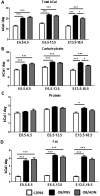
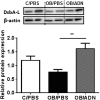
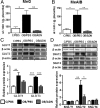
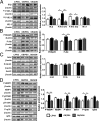

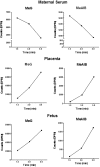

Comment in
-
Obesity: Adiponectin-good for the mother and her offspring?Nat Rev Endocrinol. 2015 Dec;11(12):688. doi: 10.1038/nrendo.2015.183. Epub 2015 Oct 20. Nat Rev Endocrinol. 2015. PMID: 26485691 No abstract available.
-
Fetal/placental weight ratio in a mouse model of maternal diet-induced obesity.Proc Natl Acad Sci U S A. 2016 Jan 19;113(3):E260. doi: 10.1073/pnas.1521107113. Epub 2016 Jan 11. Proc Natl Acad Sci U S A. 2016. PMID: 26755575 Free PMC article. No abstract available.
-
Reply to Carbillon: Fetal/placental weight ratio and placental function.Proc Natl Acad Sci U S A. 2016 Jan 19;113(3):E261. doi: 10.1073/pnas.1521808113. Epub 2016 Jan 11. Proc Natl Acad Sci U S A. 2016. PMID: 26755612 Free PMC article. No abstract available.
References
-
- Rhéaume C, Leblanc ME, Poirier P. Adiposity assessment: Explaining the association between obesity, hypertension and stroke. Expert Rev Cardiovasc Ther. 2011;9(12):1557–1564. - PubMed
-
- Gluckman PD, Hanson MA. Living with the past: Evolution, development, and patterns of disease. Science. 2004;305(5691):1733–1736. - PubMed
-
- Ogden CL, Carroll MD, Kit BK, Flegal KM. 2012. Prevalence of obesity in the United States, 2009-2010 . NCHS Data Brief 82, pp 1–8. - PubMed
-
- Catalano PM. Obesity and pregnancy--the propagation of a viscous cycle? J Clin Endocrinol Metab. 2003;88(8):3505–3506. - PubMed
Publication types
MeSH terms
Substances
Grants and funding
LinkOut - more resources
Full Text Sources
Other Literature Sources
Medical
Molecular Biology Databases
Miscellaneous

